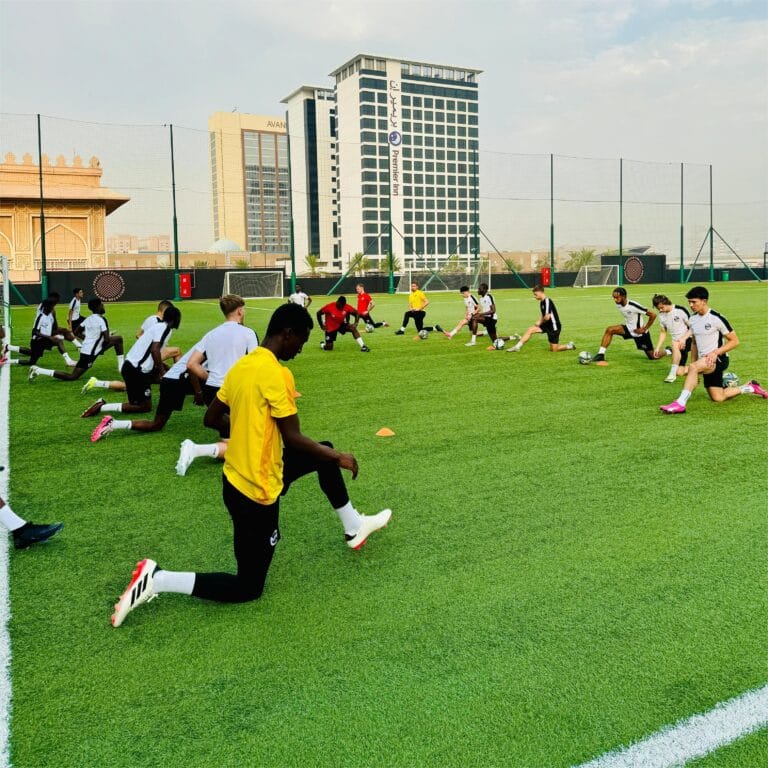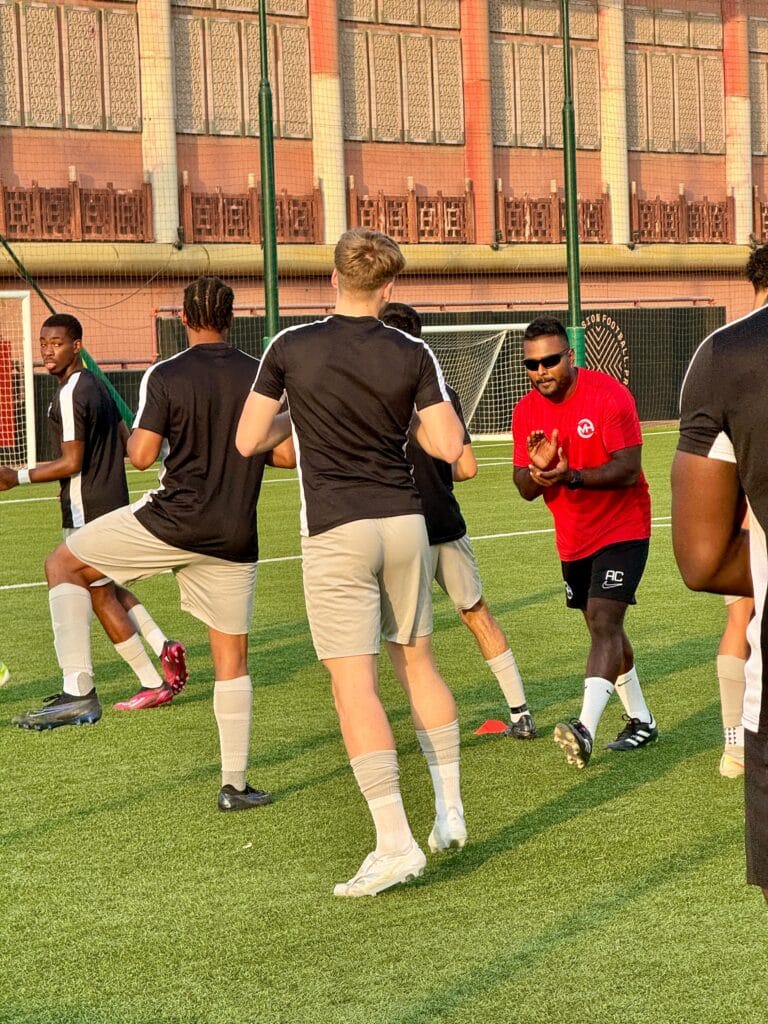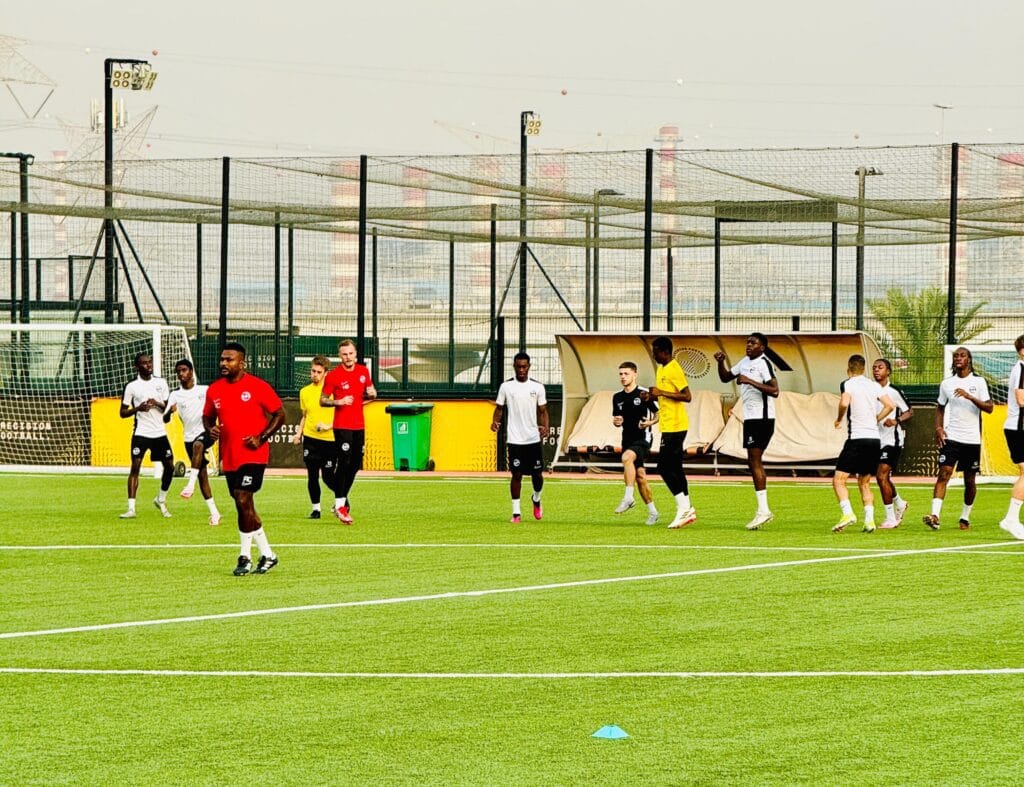Warm-Up for Football Players: A Scientific Approach by Coach Ashan Gamlath
Introduction
Warming up is a vital component of any football player’s routine, ensuring they are physically and mentally ready for training or games. A well-structured warm-up not only prepares the body for the demands of the game but also reduces the risk of injury. In this article, we will explore the key elements of an effective warm-up routine for football players, including pre-activation/prehab routines, the RAMP method, the FIFA 11+ program, and the opportunity to develop other physical qualities during warm-ups.

Why Warm-Ups Matter
Before diving into specific techniques, it is important to understand the benefits of a proper warm-up. Scientific studies have consistently highlighted the following advantages:
Increased Blood Flow: Gradually elevating heart rate boosts circulation, delivering oxygen and nutrients to the muscles. This improves muscle temperature and elasticity, reducing the risk of strains (McGowan et al., 2015).
Enhanced Muscle Activation: Warming up primes muscles for efficient contraction and reduces stiffness, optimizing performance during high-intensity movements (Behm et al., 2011).
Improved Range of Motion: Dynamic stretches and movements prepare joints and muscles for the full range of motion required during a match (Opplert & Babault, 2018).
Technical and Mental Readiness: A consistent warm-up routine enhances focus and reinforces technical skills, ensuring athletes are fully prepared for the session ahead (Williams et al., 2017).
Pre-Activation / Prehab Routines
Pre-activation, often referred to as prehabilitation (prehab), involves targeted exercises designed to activate key muscle groups and address potential weaknesses before training or competition. This proactive approach can improve performance and mitigate injury risks.

1. Muscle Activation
Pre-activation exercises focus on engaging key muscle groups such as the glutes, hamstrings, hip flexors, and core muscles, which are critical for football performance. Research suggests that activating these muscles enhances neuromuscular efficiency and stability (Del Vecchio et al., 2018).
Example Exercises:
- Glute bridges
- Banded lateral walks
- Hamstring curls using resistance bands
- Plank variations for core activation

2. Dynamic Stretches
Dynamic stretches encourage mobility through a functional range of motion, ensuring that muscles and joints are prepared for football-specific actions.
Examples:
- High knees
- Walking lunges with a twist
- Hamstring sweeps
- Bodyweight squats with arm swings
3. Proprioception & Stability
Incorporating proprioceptive and stability exercises enhances joint stability and reduces the risk of sprains and strains. These exercises improve balance, coordination, and injury resilience (Malliou et al., 2004).
Example Exercises:
- Single-leg squats
- Balance work on a wobble board
- Bulgarian split squats

4. Injury Prevention
Prehab routines often include exercises that target injury-prone areas such as the groin, knees, and ankles. Strengthening these regions can significantly reduce the incidence of injuries (Hölmich et al., 1999).
Example Exercises:
- Copenhagen planks for groin strength
- Ankle stability exercises with resistance bands
- Nordic hamstring curls
- The RAMP Method
- The RAMP (Raise, Activate, Mobilize, and Potentiate) method provides a systematic framework for warm-ups, ensuring all critical components are addressed (Jeffreys, 2007).
- Raise: Increase heart rate and blood flow through low-intensity activities such as jogging or skipping.
- Activate: Engage key muscle groups with targeted exercises (e.g., banded glute bridges).
- Mobilize: Improve range of motion with dynamic stretches.
- Potentiate: Perform sport-specific drills at game intensity, such as sprints or passing drills.
- The FIFA 11+ Program
- The FIFA 11+ warm-up program is a comprehensive routine designed to enhance performance and reduce injury risk in football players. It has been validated by extensive research and is widely used at all levels of the game (Soligard et al., 2008).
Components:
Running exercises (e.g., jogging, cutting movements)
Strength, plyometric, and balance exercises (e.g., single-leg hops, side planks)
High-intensity running drills
Studies show that teams implementing the FIFA 11+ program experience a significant reduction in injuries, particularly ACL injuries (Silvers-Granelli et al., 2015).

Developing Physical Qualities During Warm-Ups
Warm-ups provide an excellent opportunity to develop physical qualities such as speed, agility, and coordination. Incorporating short sprints, agility ladder drills, or quick reaction exercises can enhance performance while maintaining the primary goals of the warm-up (Bishop, 2003).
Conclusion
A well-designed warm-up routine is essential for optimizing performance and reducing injury risks in football players. By integrating pre-activation exercises, dynamic stretches, the RAMP method, and evidence-based programs like FIFA 11+, coaches can ensure their players are physically and mentally prepared for the demands of the game. Adopting a scientific approach to warm-ups is a vital step toward achieving consistent and sustainable performance.
References
- Behm, D. G., et al. (2011). Acute effects of muscle stretching on physical performance, range of motion, and injury incidence in healthy active individuals: A systematic review. Applied Physiology, Nutrition, and Metabolism, 36(1), 1-11.
- Bishop, D. (2003). Warm up II: Performance changes following active warm up and how to structure the warm up. Sports Medicine, 33(7), 483-498.
- Fletcher, I. M., & Monte-Colombo, M. M. (2010). An investigation into the effects of different warm-up modalities on specific sprint performance. Journal of Strength and Conditioning Research, 24(7), 1831-1837.
- Hölmich, P., et al. (1999). Effectiveness of active physical training as treatment for long-standing adductor-related groin pain in athletes: Randomized trial. The Lancet, 353(9151), 439-443.
- Jeffreys, I. (2007). Warm up revisited: The “RAMP” method. UK Strength and Conditioning Association Journal, 10(4), 15-19.
- McGowan, C. J., et al. (2015). Warm-up strategies for sport and exercise: Mechanisms and applications. Sports Medicine, 45(11), 1523-1546.
- Soligard, T., et al. (2008). Comprehensive warm-up programme to prevent injuries in young female footballers: Cluster randomised controlled trial. BMJ, 337, a2469.
By Ashan Gamlath

